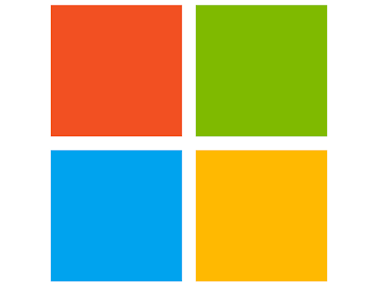 I’ve been reading a lot about the sweeping organizational changes at Microsoft. It’s always interesting to analyze and attempt to interpret their strategy and internal politics. (For example, why is the Dynamics business still separate? Is it being positioned to be sold? Probably not, but fun to consider.)
I’ve been reading a lot about the sweeping organizational changes at Microsoft. It’s always interesting to analyze and attempt to interpret their strategy and internal politics. (For example, why is the Dynamics business still separate? Is it being positioned to be sold? Probably not, but fun to consider.)
However, I am more drawn to the larger changes the re-org is enabling. The external press always seems to be negative about the actions of Microsoft’s executive leadership ever since Bill Gates left. While I may not agree with every choice Steve Ballmer has made, when you really stop and think about how they have transformed themselves over the past six years, it’s pretty amazing — especially when set in juxtaposition to the lack of change at other lumbering IT giants. Microsoft is well on their way to transforming from a worldwide monopoly of “Windows and Office” to a “devices and services” business.
The Microsoft cash cow, business model and market position has been primarily based on “Windows and Office” (including Exchange) for decades. They are now aggressively commoditizing that business before a competitor does it for them. Google was well positioned and extremely well funded, however the majority of paying clients are moving to the very low-cost Office 365 SaaS. Microsoft is rewarding their partners to move them as quickly as possible. Most of this year’s Partner of the Year awards went to those partners. What was once the large majority of Enterprise Agreement (EA) revenue from their clients is now about half of what it once was on a client-by-client basis. They are now manically focused on competing with Google for this workload, even at the extremely low cost they have driven it down to. Their field sales leadership demand that they be informed of every Google competitive situation so they can bring every asset and focus possible to winning. In the east region of the U.S. for example, they won every single competitive situation in the last fiscal year. That’s pretty impressive. They aggressively cannibalized their business and beat the great Google in the process.
But that’s only part of the grand plan. They cannibalized one business to enable another. For almost a decade Microsoft has been investing tens of billions of dollars into building their public cloud. That huge bet is now transforming their business and culture. Could you imagine Microsoft supporting Linux or Oracle or Open Source just a few years ago? That would have been met with internal righteous indignation. Now the leadership of that business just cares about getting the meters to turn. They don’t care what the workload is. They will take any workload even if it undermines another line of business. In my opinion, that is very healthy.
While Amazon is the market leader for public cloud infrastructure and probably will be for a while, Microsoft is aggressively delivering “services” across the IaaS, PaaS and SaaS continuum. The re-org is fundamentally aimed at speeding this delivery. They have great market position when it comes to hybrid situations which represents the past “Windows and Office” installed base. Pure play cloud solutions will be tougher competitively. AWS is just so easy to use and they have more services and a richer set of features for today.
What is most surprising to many is Microsoft’s commitment to building a “devices” business. By that they mean phones and tablets, along with the much-anticipated next release of Xbox and Kinect. Most people would not have estimated that. Android and Apple have a massive lead in terms of consumer phone and tablet market share. However, I think the Microsoft application development platform may prove to be a key market advantage, particularly if they can achieve something close to write once, run anywhere. Microsoft Windows 8 is improving and evolving. The off-the-shelf “devices” are gaining acceptance by consumers and business. We see new offerings each month. However, that may not prove to be the most important part of their future “devices” business. I see the “devices” business expanding dramatically past consumer “devices” and into embedded “devices.”
[pullquote]A whole new generation of specialized “devices” with Windows Embedded 8 is on the way. [/pullquote]A whole new generation of specialized “devices” with Windows Embedded 8 is on the way. In the first half of next year we will see Windows Embedded 8 “devices” in phone and tablet form factors with specialized features for package delivery, mobile point-of-service, communication and collaboration, scanning and data capture. In addition, we will start to see Windows Embedded 8 used in many other ways beyond handheld “devices.” We’ll see Windows Embedded 8 in ATMs, kiosks, medical devices, cars, trucks, vending machines or anything that would benefit from a touch-based user experience and operational intelligence connected ubiquitously in the cloud. IDC and Harbor Research estimate there will be 50 billion embedded devices by 2020…and billions of devices means millions of new applications, which is music to our ears.
Microsoft has made some very good technical and business decisions here. The Windows 6.5 platform (on which these solutions were based) enabled complete programmatic control on behalf of the ISV in the past. These vendors now build upon the same Windows 8 Standard that we build upon. To some extent this commoditizes the ISVs and provides greater control and flexibility on behalf of Microsoft to evolve the complete platform without breaking applications across releases. This platform commonality enables innovation to find their way across all platforms, so we as software and systems engineers see a single platform.
Our investments in building experience and several wins for solutions that include tablet/phone applications integrated with backend systems will help us to continue to capitalize on Microsoft “device” business innovations like Windows Embedded 8. We will seek to expand our partnerships into this new market area both with Microsoft and others like telecom firms and leading ISVs. Also please note Microsoft has some new additions in this market area that will be shared under NDA with partners like us this month, so we can begin to help clients envision solutions for early adoption next year.
Microsoft is often maligned for a lack of leadership and market insight. And yet I would say that evolving the worldwide monopoly of Microsoft “Windows and Office” to a “devices and services” business may prove to be the most stunning transformation for a lumbering giant in IT history. They have a very long way to go and they need to do a great job of delivery year over year. The commoditization of hardware and software is a daunting task to overcome for any software company.
We here at AIS are fueled by innovation and change. Just like Microsoft, we simply must continue to evolve and embrace the right changes so we can bring compelling, transformational solutions to our clients.






